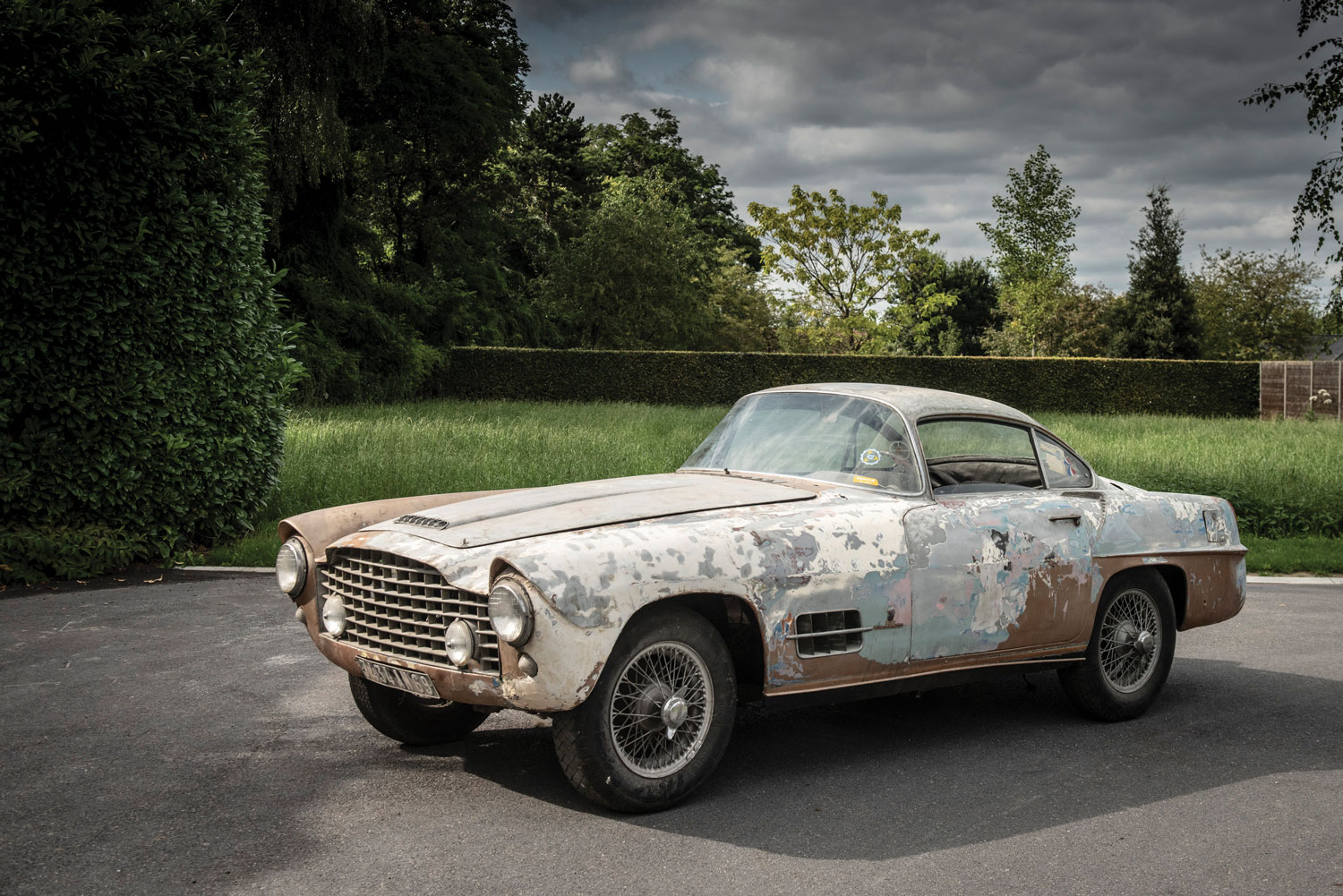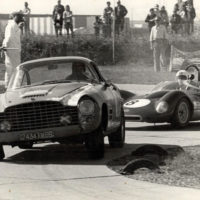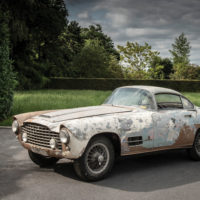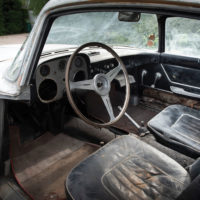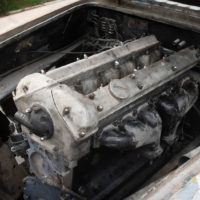SCM Analysis
Detailing
| Vehicle: | 1955 Jaguar XK 140 Coupe by Ghia |
| Years Produced: | 1955–56 |
| Number Produced: | 4 (Ghia-bodied) |
| Tune Up Cost: | $900 |
| Chassis Number Location: | Stamped on chassis frame left-hand side member above rear engine-mounting bracket |
| Engine Number Location: | Stamped on back of head and above oil filter |
| Club Info: | Jaguar Clubs of North America |
| Website: | http://www.jcna.com |
| Alternatives: | 1952 Jaguar XK 120 Supersonic by Ghia 1954 Jaguar XK 140 Zagato coupe 1954–55 Alfa Romeo 1900 C SS coupe by Ghia |
This car, Lot 48, sold for $332,609 (€287,500), including buyer’s premium, at Bonhams’ The Zoute Sale in Knokke-Heist, BEL, on October 10, 2021.
Without a doubt, the XK-series Jaguar is one of the most iconic cars ever manufactured, full of appeal, beauty and with a wonderful driving attitude. Models of this classic series are still much loved today, whether they are 120s, 140s or 150s.
The oldest, the 120, is the most aesthetically beautiful, but it is hard to fit behind its steering wheel. The youngest, the 150, is most powerful but is the least beautiful. The “in between” 140 is the most balanced, still attractive to the eye and with a better driving position.
The biggest limitations of the XKs in period were their brakes (an issue shared with every other competitor), engine cooling, and, of course, weight. The steel body was heavy enough to hamper performance, affecting acceleration and road handling and exacerbating the braking issue.
One solution was simply asking independent carrozzerie to dress the cars with aluminum alloy bodies made of hand-hammered panels. This not only made the cars lighter, but usually much more beautiful as well. In practice, an aluminum body for the XK could shed some 100 kilos (220 pounds) compared to a standard steel car, so it is easy to see why Sir William Lyons decided to have some of his cars dressed in Italy.
Subsonic
The most famous (and valuable) of these is the Jaguar XK 120 Supersonic by Ghia, shown for the first time at the October 1954 Paris Motor Show. Although our subject car was also shown at Paris, two years later, it was not such a stunning creation. Its design borrowed less from the XK 120 Supersonic and more from Savonuzzi’s Alfa Romeo 1900 C SS, which had been shown earlier in 1954.
Ghia’s XK 140 was a decent interpretation of mid-1950s Jet Age themes but far from the aesthetic tastes of the traditional British Jaguar customer. A few racers, however, saw the potential of the Ghia-bodied car and were happy to prove the benefit of its lightweight and aerodynamic body. More than one of our subject car’s early owners entered it in competition.
It’s not a quilt
As often happens with competition cars, s/n 810827DN has been quite heavily transformed during its lifespan. The car was changed in-period around 1959, which altered the look of the bodywork, mostly in the front. A decision will need to be made prior to restoration about when to “freeze” it and how best to preserve as much as possible of its period componentry.
Eventually this car had a 3.8-liter engine from a later XK installed, in 1969. While this must have been just the ticket for historic races, it now must be replaced with an original unit. The engine block now fitted (from a Jaguar Mk IX) is completely wrong anyway, and it is unlikely that this car will be rebuilt for competition.
Restoring a modified or incomplete car can be difficult, even more so when it is one of very few examples with little to go on for reference. The buyer here is a brave collector who brought home a challenging project. Considerable research will need to be performed if the car is to be brought back to life as it was supposed to be. Careful consideration must go into the restoration or the final result will be a patchwork, undoubtedly then penalized at concours and in the market.
Valuation
Whether any of this makes financial sense remains to be seen. The analysis is not so easy, as is always the case with such low-production models where there are few (or no) identical comparables.
Today, the lower starting point for buying a good Jaguar XK 140 coupe of similar vintage is around $60k–$70k. One of the three Ghia-built Jaguar XK 120 Supersonics, in perfect condition, sold in 2015 for around $2m; this could be considered an optimistic flipside to the value equation. More likely it would be correct to compare our subject car to an Alfa 1900 bodied by Ghia, of which 12 were built. These might be valued around $400k. If that’s the case, the new owner here has little margin to restore the car without finding himself underwater.
But if we go deeper in our analysis, we might try to compare the value relationship of this XK 140 Ghia to its XK 120 Supersonic sibling in the same way that the Fiat 8V Supersonic is valued above other less-refined Fiat 8Vs (about $1.9m for the former and $1.1m for the latter). This would certainly make the amount spent here for a car that needs everything seem reasonable.
Or perhaps the extra value allowed to the one-off 1956 Aston Martin DB2/4 Supersonic Ghia compared to standard-bodied cars — a factor of about 10 — might serve as something of a middle ground. Our subject car, perfectly restored, might be worth in the area of $700k. In this scenario, a decent profit margin might still be possible, even after a time-consuming and expensive restoration. But you still have to find somebody willing to buy it. Until I see that happen, I’m going to call this one well sold. ♦
(Introductory description courtesy of Bonhams.)
